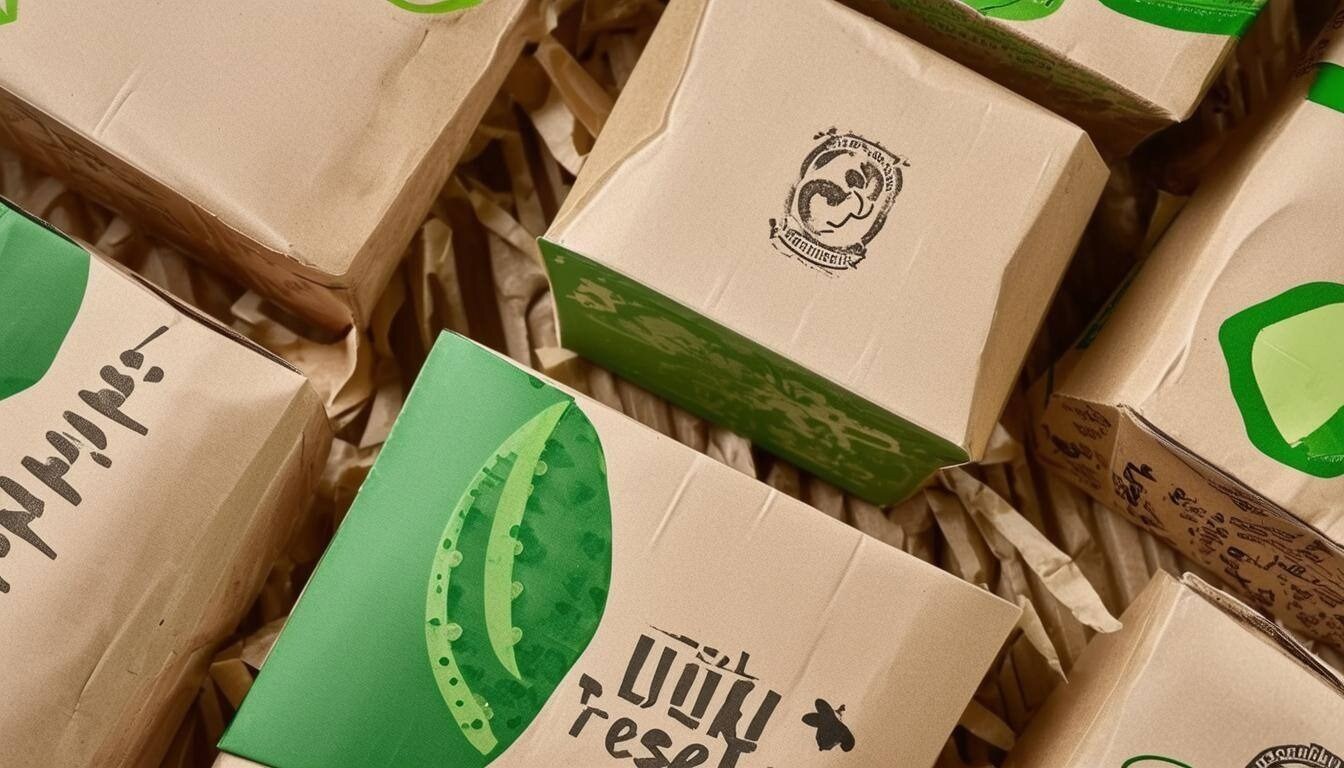The push for sustainability in the food industry has led to a surge in innovative packaging solutions, with upcycled packaging gaining attention as an eco-friendly alternative. This approach involves using materials that would otherwise be considered waste and repurposing them into functional packaging. Upcycled packaging not only reduces environmental impact but also supports the circular economy, where waste is transformed into valuable resources. In this guide, we’ll explore what upcycled packaging is, its benefits, applications, and challenges in the food industry.
What is Upcycled Packaging?
Upcycled packaging refers to packaging made from recycled or repurposed materials that would otherwise be discarded as waste. Unlike traditional recycling, which often downgrades material quality, upcycling retains or enhances the value of the material. By using materials like agricultural by-products, waste textiles, or post-consumer goods, upcycled packaging transforms what would be waste into valuable packaging materials.
Key Characteristics of Upcycled Packaging:
- Waste Minimization: Upcycled packaging helps reduce the amount of waste sent to landfills by repurposing waste materials.
- Sustainability: It promotes the use of renewable resources, reducing the environmental impact of packaging production.
- Innovation: The upcycling process often involves creative and innovative solutions to turn waste into functional, high-quality packaging.
Benefits of Upcycled Packaging in the Food Industry
1. Reduction of Waste
One of the most significant advantages of upcycled packaging is its ability to reduce waste. By reusing materials that would otherwise be discarded, the food industry can minimize its contribution to landfills and the growing global waste crisis. This is particularly important in industries that generate a large amount of waste, such as food and agriculture.
2. Environmental Sustainability
Upcycled packaging contributes to environmental sustainability by using fewer virgin materials. This reduces the demand for natural resources and lowers the carbon footprint of packaging production. Since upcycled materials are often sourced from waste, their environmental impact is significantly lower compared to traditional packaging materials.
3. Support for the Circular Economy
The circular economy aims to eliminate waste by continually reusing and repurposing materials. Upcycled packaging supports this model by ensuring that waste materials are given a second life as packaging. This not only reduces waste but also encourages a more resource-efficient economy.
4. Consumer Appeal
Consumers are increasingly looking for brands that prioritize sustainability. By adopting upcycled packaging, food companies can appeal to eco-conscious consumers who value brands that actively reduce their environmental footprint. Upcycled packaging offers a unique selling point that can set a brand apart in a competitive market.
Challenges of Upcycled Packaging in the Food Industry
1. Consistency of Materials
One of the challenges of upcycled packaging is the inconsistency of available materials. Since upcycled materials are often sourced from waste, their quality and availability can vary. This can make it difficult for companies to ensure a consistent supply of packaging materials, especially at large scales.
2. Higher Costs
Upcycling processes can be more labor-intensive and expensive than producing traditional packaging materials. The cost of collecting, cleaning, and repurposing waste materials can be higher than using virgin materials. As a result, upcycled packaging may come at a premium price, making it less accessible for some companies.
3. Perceived Quality Issues
While upcycled packaging can be of high quality, there is sometimes a perception that it is inferior to traditional packaging. Consumers may have concerns about the durability or safety of upcycled materials, particularly when used for food packaging. Clear communication about the safety and sustainability of upcycled packaging is essential to overcoming these perceptions.
Applications of Upcycled Packaging in the Food Industry
1. Packaging for Fresh Produce
Upcycled materials, such as agricultural waste, can be repurposed into packaging for fresh fruits and vegetables. For example, waste fibers from crops can be processed into biodegradable packaging trays, reducing the need for single-use plastics.
2. Beverage Packaging
In the beverage industry, companies are experimenting with upcycled glass and other materials for bottles and containers. These materials not only reduce waste but also provide a high-quality, eco-friendly packaging option for beverages like juice, wine, and spirits.
3. Snack Packaging
Upcycled packaging can be used for snacks and dry goods, such as chips, nuts, and cereals. Materials like waste textiles or recycled plastics can be transformed into durable, food-safe packaging that aligns with sustainable practices.
4. Compostable Containers
Some upcycled packaging is designed to be compostable, offering an eco-friendly alternative to traditional plastic containers. For example, packaging made from upcycled agricultural waste can be composted after use, creating a closed-loop system that supports the environment.
The Future of Upcycled Packaging in the Food Industry
As sustainability becomes a more pressing concern for both consumers and companies, the future of upcycled packaging looks promising. Technological advancements will make it easier and more cost-effective to source, process, and repurpose waste materials for packaging. Additionally, as the circular economy gains traction, upcycled packaging will play a key role in reducing waste and promoting resource efficiency.
Conclusion
Upcycled packaging offers a sustainable and innovative solution to the waste challenges facing the food industry. By repurposing materials that would otherwise be discarded, companies can reduce their environmental impact, support the circular economy, and appeal to eco-conscious consumers. While there are challenges, such as cost and material consistency, the benefits of upcycled packaging far outweigh the drawbacks. As the demand for sustainable packaging grows, upcycled materials will play an increasingly important role in the future of food packaging.
Want to elevate your sustainability efforts?
Discover our Sustainability Intelligence Software for comprehensive monitoring and compliance, helping you achieve your sustainability goals!





.webp?width=1644&height=1254&name=Food%20Safety%20Dashboard%201%20(1).webp)
